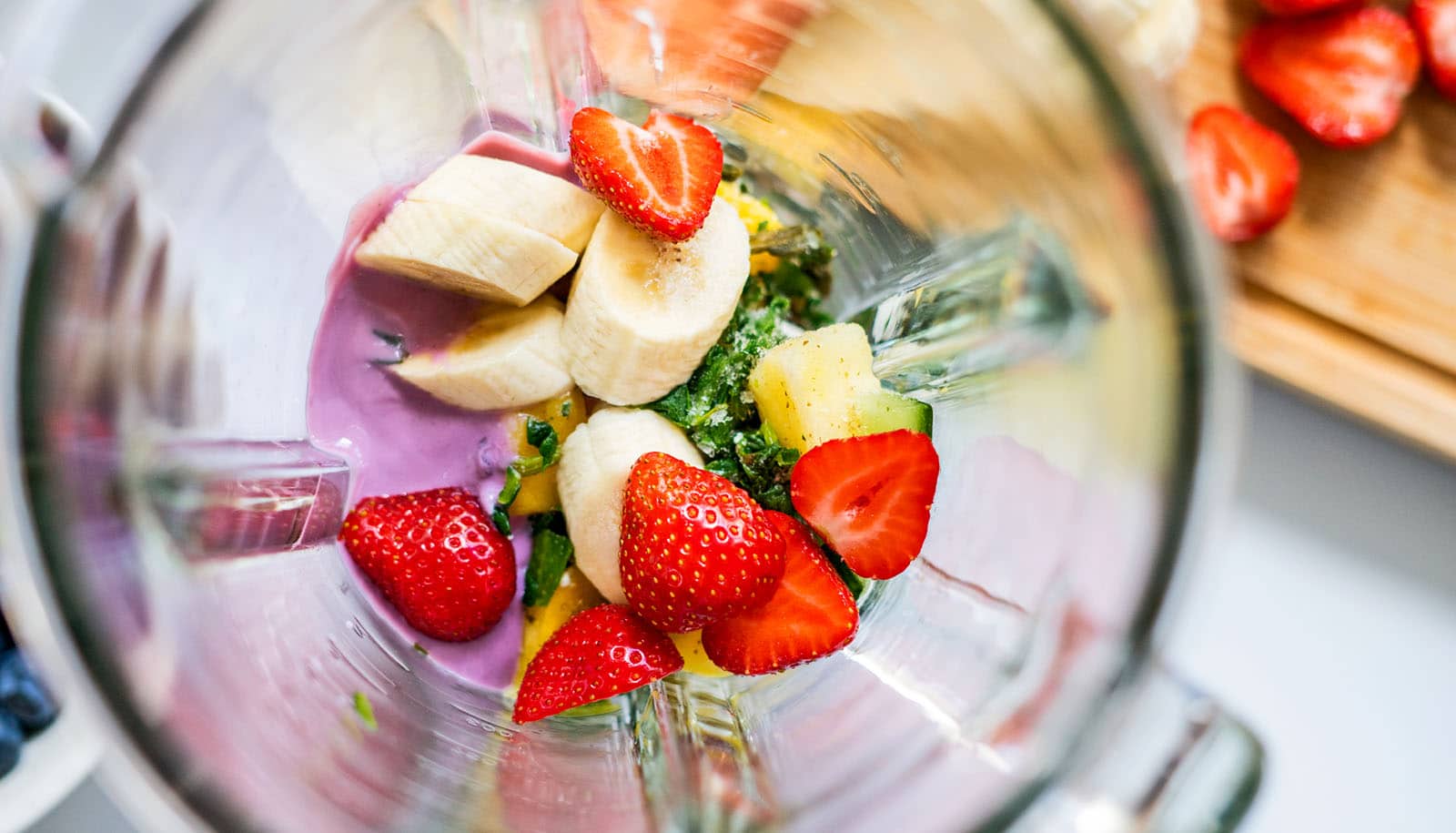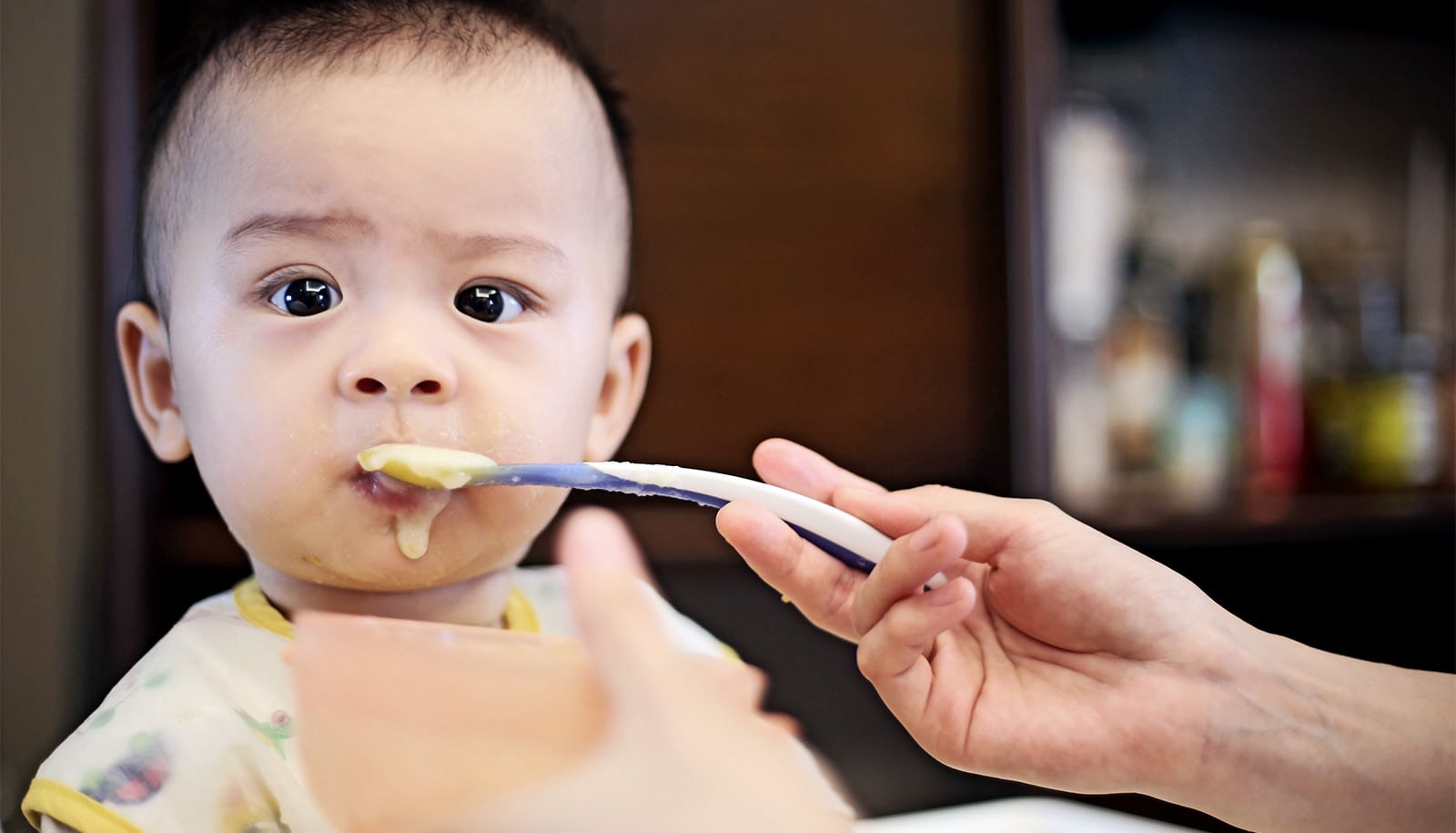
"We were really surprised to see how quickly adding a single banana decreased the level of flavanols in the smoothie and the levels of flavanol absorbed in the body," Javier Ottaviani says. (Credit: Getty Images )
To get more flavanols in your smoothie, skip banana?
Certain combinations of smoothie ingredients can reduce the amount of flavanols in the drink, a study finds.
Certain combinations of ingredients can reduce the amount of flavanols in a smoothie, a study shows.
The study, published in the journal Food and Function , used smoothies to test how various levels of polyphenol oxidase (PPO), an enzyme in many fruits and vegetables, affect the levels of flavanols in food that the body absorbs. Flavanols are a group of bioactive compounds that are good for your heart and cognitive health and are naturally found in apples , pears, blueberries, blackberries, grapes, and cocoa—common smoothie ingredients.
“We sought to understand, on a very practical level, how a common food and food preparation like a banana-based smoothie could affect the availability of flavanols to be absorbed after intake,” says lead author Javier Ottaviani, director of the Core Laboratory of Mars Edge, which is part of Mars, Inc., and an adjunct researcher with the University of California, Davis department of nutrition.
The researchers had participants drink a smoothie made with banana , which has high PPO activity, and a smoothie made with mixed berries, which have low PPO activity. Participants also took a flavanol capsule as a control. The researchers analyzed blood and urine samples to measure how much flavanols were present in the body after ingesting the smoothie samples and capsule. Participants who drank the banana smoothie had 84% lower levels of flavanols in their body compared to the control.
“We were really surprised to see how quickly adding a single banana decreased the level of flavanols in the smoothie and the levels of flavanol absorbed in the body,” Ottaviani says. “This highlights how food preparation and combinations can affect the absorption of dietary compounds in foods.”
Ottaviani says that people who are trying to consume flavanols should consider preparing smoothies by combining flavanol-rich fruits like berries with other ingredients that also have a low PPO activity like pineapple, oranges, mango, or yogurt.
People who want to consume smoothies with bananas, or other high PPO activity fruits and vegetables such as beet greens, Ottaviani’s suggestion is to not combine them with flavanol-rich fruits such as berries, grapes, and cocoa.
The findings of this study could spur future research into how other foods are prepared and the effects on flavanols, for example, Ottaviani says tea is a major dietary source of flavanols and depending on how it is prepared, a different amount of flavanols would be available for absorption.
“This is certainly an area that deserves more attention in the field of polyphenols and bioactive compounds in general,” says Ottaviani.
Additional researchers from UC Davis, the University of Reading, King Saud University, and Mars, Inc. contributed to the research.
Funding came from Mars, Inc.
Source: UC Davis
The post To get more flavanols in your smoothie, skip banana? appeared first on Futurity .
Share this article:
This article uses material from the Futurity article, and is licenced under a CC BY-SA 4.0 International License. Images, videos and audio are available under their respective licenses.
Related Articles:
Some ‘veggie’ baby foods have more sweet fruit
April 13, 2020 • futurityDrink labels are too tricky about juice vs. junk
April 17, 2020 • futurityLinks/images:
- https://dx.doi.org/10.1039/D3FO01599H
- https://www.futurity.org/apples-silk-road-kazakhstan-1519762-2/
- https://www.futurity.org/fungi-bananas-1225422-2/
- https://www.ucdavis.edu/health/news/right-combo-getting-most-health-benefits-fruit-smoothies
- https://www.futurity.org/smoothies-bananas-flavanols-2965802-2/
- https://www.futurity.org


